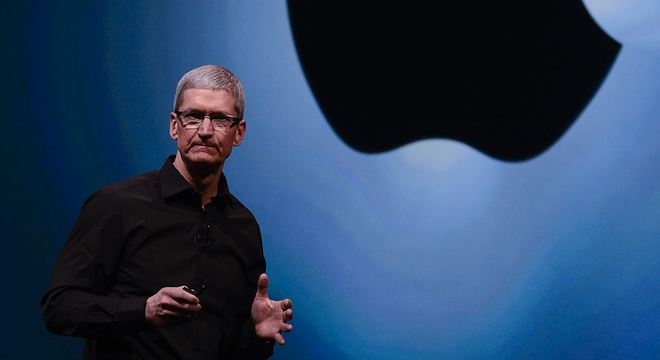Apple’s CEO Tim Cook has realized the company’s new default Apple Maps app got off on the wrong track, and he’s sorry about that, as he expressed in a striking, unexpected public apology note posted on Apple’s website on Friday.
“We are extremely sorry for the frustration this has caused our customers and we are doing everything we can to make Maps better,” Cook wrote in his note, before taking the highly unusual step of telling users to try out competing mobile mapping services available in Apple’s App Store or as mobile websites, including Microsoft’s Bing app, AOL’s Mapquest app and the Nokia Maps and Google Maps mobile websites.
“While we’re improving Maps, you can try alternatives,” Cook wrote in the note, linking to Apple’s mapping rivals, though Cook did not indicate that Apple would change its policy and settings to allow customers to switch to another mapping service by default on their devices, which they currently cannot do without jailbreaking their Apple device.
Apple previously relied on Google Maps as the default mapping service on the iPhone, iPad and iPod Touch, but the company replaced it with Apple Maps, its own mapping software, in the new version of Apple’s mobile operating system for its devices, iOS 6, which was released on September 19. Apple dropped Google Maps reportedly one year before its deal with Google was set to expire primarily because the two companies couldn’t work out a way for Google to provide voice-guided turn-by-turn directions on Apple devices.
The new iPhone 5 also had iOS 6 as its default operating system, and Apple Maps as its default map, meaning all new iPhone 5 customers received the software whether they liked it or not. Meanwhile, Google has not clarified whether it will ever provide a new standalone Google Maps app for Apple mobile devices, and if so, when users might expect it, with conflicting reports emerging as to any effort in that direction on Google’s part.
Within 24 hours of the release of iOS 6, complaints about Apple Maps began flooding the Web, as users encountered incorrect addresses, inaccurate directions, wholly misplaced locations (such as addresses appearing in completely different cities), missing towns and landmarks, cloned islands, and strange warped graphics showing bridges collapsing into the water and roadways buckling as if ravaged in earthquakes.
Apple initially addressed the complaints stiffly and unapologetically on September 20, with spokesperson Trudy Muller telling All Things D:
“Customers around the world are upgrading to iOS 6 with over 200 new features including Apple Maps, our first map service…We are excited to offer this service with innovative new features like Flyover and Siri integration, and free turn by turn navigation. We launched this new map service knowing that it is a major initiative and we are just getting started with it. We are continuously improving it, and as Maps is a crowd-based solution, the more people use it, the better it will get. We’re also working with developers to integrate some of the amazing transit apps in the App Store into iOS Maps. We appreciate all of the customer feedback and are working hard to make the customer experience even better.”
Apple Maps does allow users to report errors they encounter to the company from their devices, by simply clicking the “page turn” in the lower right hand corner of the Apple Maps view and clicking “Report a problem” in the middle of the view.
But the complaints continued, with tech writers and power users even announcing they would be switching to Google’s Android smartphones simply because Apple Maps was such a disaster.
Apple still promotes Apple Maps on its website with the statement that it “may” be “the most beautiful, powerful mapping service ever,” and expectations were extremely high when the service was first shown off in June.
It’s unclear if Apple will be taking any other steps to mitigate its massive Maps blunders for users as it works behind the scenes to fix the service. TPM has reached out to the company for more information and will update when we hear back.
Here is Cook’s full apology note:
To our customers,
At Apple, we strive to make world-class products that deliver the best experience possible to our customers. With the launch of our new Maps last week, we fell short on this commitment. We are extremely sorry for the frustration this has caused our customers and we are doing everything we can to make Maps better.
We launched Maps initially with the first version of iOS. As time progressed, we wanted to provide our customers with even better Maps including features such as turn-by-turn directions, voice integration, Flyover and vector-based maps. In order to do this, we had to create a new version of Maps from the ground up.
There are already more than 100 million iOS devices using the new Apple Maps, with more and more joining us every day. In just over a week, iOS users with the new Maps have already searched for nearly half a billion locations. The more our customers use our Maps the better it will get and we greatly appreciate all of the feedback we have received from you.
While we’re improving Maps, you can try alternatives by downloading map apps from the App Store like Bing, MapQuest and Waze, or use Google or Nokia maps by going to their websites and creating an icon on your home screen to their web app.
Everything we do at Apple is aimed at making our products the best in the world. We know that you expect that from us, and we will keep working non-stop until Maps lives up to the same incredibly high standard.
Tim Cook
Apple’s CEO






